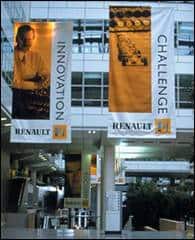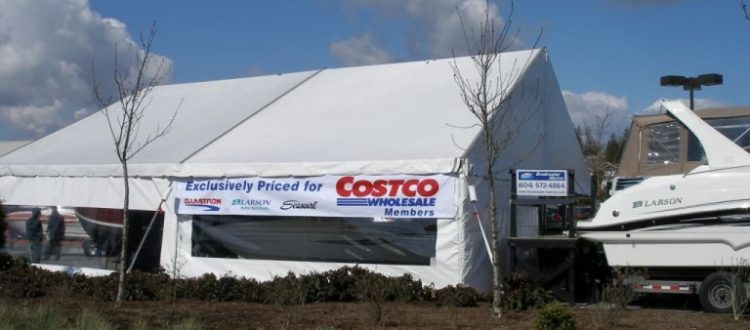Do outdoor banners need wind slits? Sublimated versus DSG displays. And, is it normal for a banner to have a glare look?
Question: Do outdoor graphics require wind slits?
This is a favorite topic of mine as there are so many misconceptions about wind slits or wind pockets being cut into banners.
Reduction of Wind Load
Wind pockets allow about 4-5% wind load reduction on vinyl banners, which, in our opinion, is negligible and makes the banners weaker and uglier. Quite frankly, I think wind slits in outdoor vinyl banners are just ugly. With little benefit.
If you want to hang a banner in a high wind area, you would be better to sew beefy nylon ropes into the hems, or thread a cable through pole pockets than to spoil the look of your new banner by cutting virtual holes into it.
Alternative to Using Banners with Wind Slits
Another option, of course, would be to use vinyl mesh banners. This material only allows about 10-15% wind slippage, which is better than wind pockets, but still, in our opinion, not enough to mute the graphics. However, mesh banners have become very popular, and we’re not opposed to selling them if our clients choose that option, unlike our opposition to cutting slits in a vinyl banner.
Question: What is the difference between the dye sub banner and a DSG banner?

Suitable Substrates for Printing
DSG stands for Direct-to-substrate graphic and is a plastic printing method, whereas dye sublimation printing on banners is done exclusively on fabric banners, mainly polyester fabrics.
The Printing Process
The dye sub printing process is currently done two different ways. The first way is to print a paper transfer material with CMYO (Cyan Magenta Yellow & a clear Overcoat). Once the paper is printed, it is “married” to a cloth banner and is pressure-rolled using heated rollers to sublimate the print to the fabric.
The second method is to print direct-to-fabric printing which is similar to dye sublimation but is simpler in that it doesn’t use the heat/pressure combination. It is also known as digital fabric printing, but the net result is pretty much the same as far as getting some great looking printing.
DSG or direct-to-substrate graphic printing is digital printing typically done on a durable, semi-rigid plastic substrate whose edges are curl-resistant. It has similar viewing properties to dye sub prints.
Question: My last banner stand graphic had a lot of glare. Is this normal?
Yes, for some companies that sell low-end roll-up banners it is. We often replace graphics for clients who are unhappy with an unsatisfactory plasticky roll up banner that they purchase for cheap and got just in time to go to the next trade show.
This is a pet peeve of mine for a couple reasons. The first is the mentality that saving money is all there is to shopping online. Just go out and compare prices and go with el cheapo company and save money.
Problem is, you end up buying the banner twice when you see the cheap quality and realize that your banner’s looking cheap is making your company look cheap, and a cheap company most likely skimps on quality and service, right?
So, yes, for some printers, that is normal. Our preference is to go with either a non-glare DSG (see above question), or with dye sublimation printed cloth or fabric banners. They always look great, expensive (even though they’re not really expensive), and make your company look like a company you’d want to do business with.
More about custom printing of dye sublimation printed banners can be found here.
Popular Posts:




